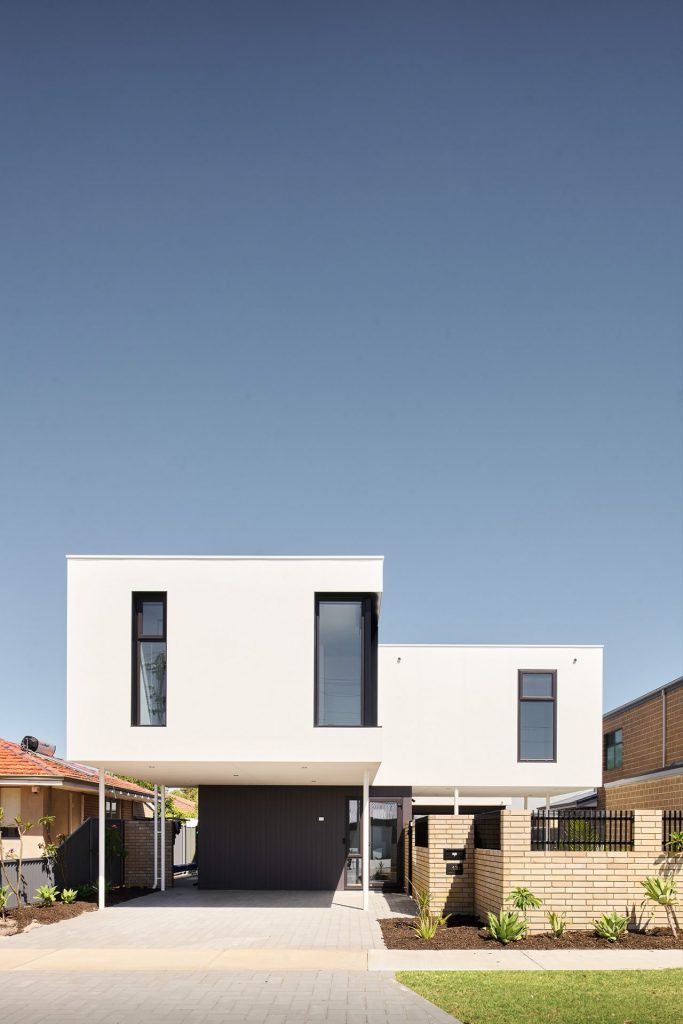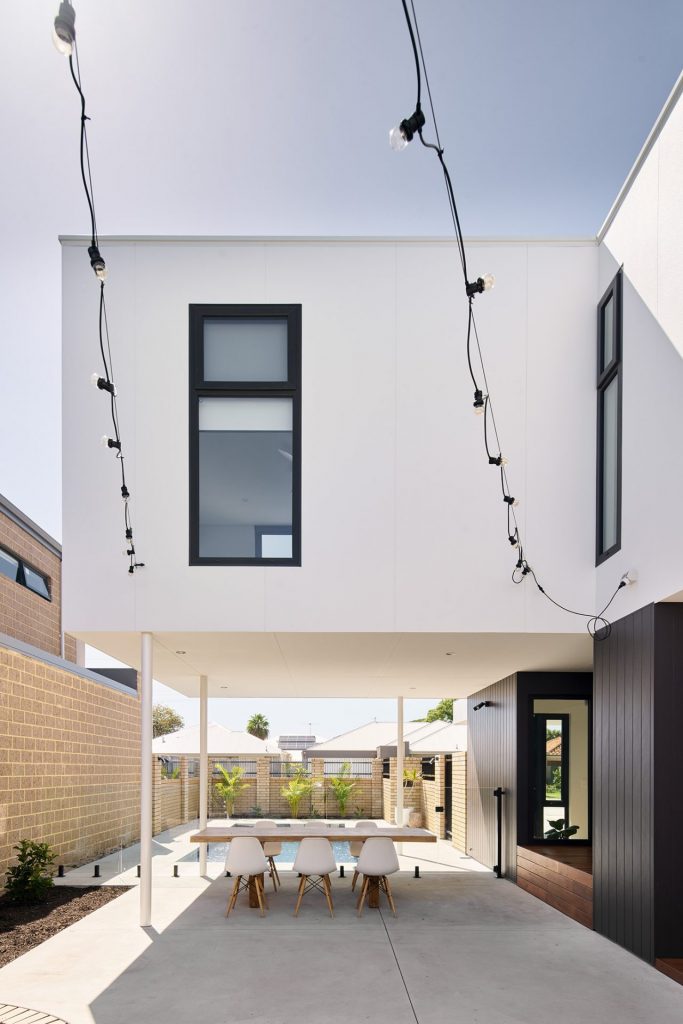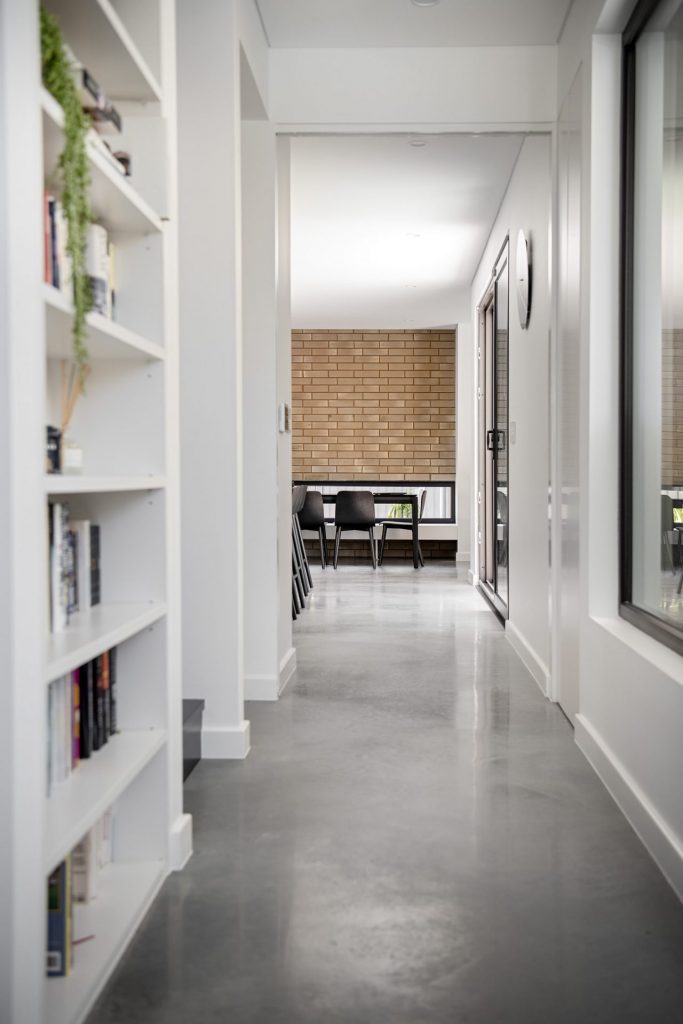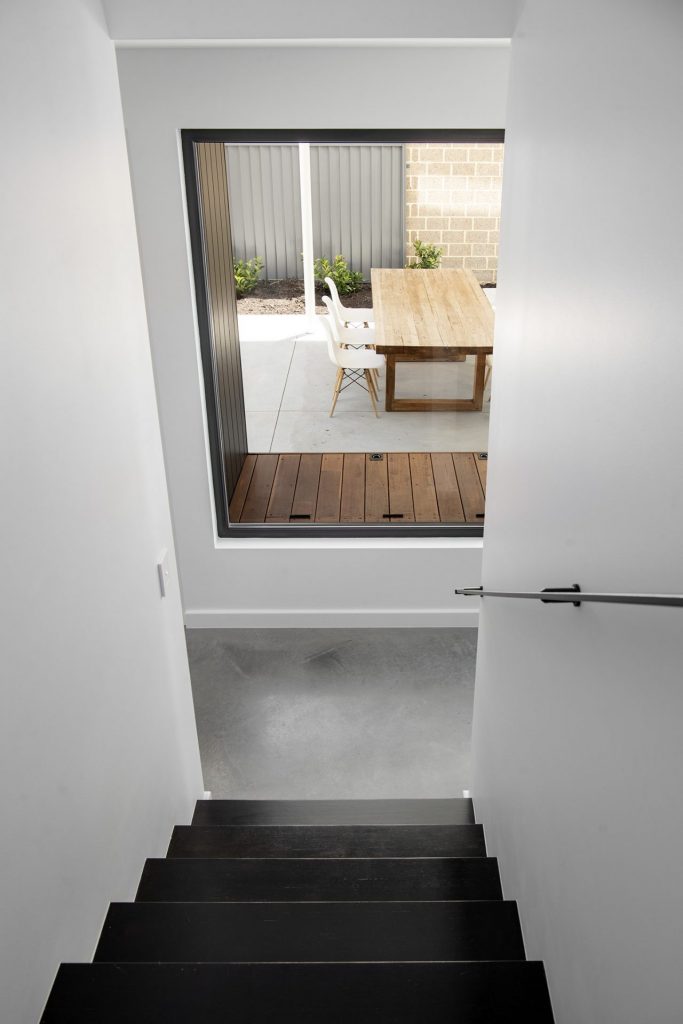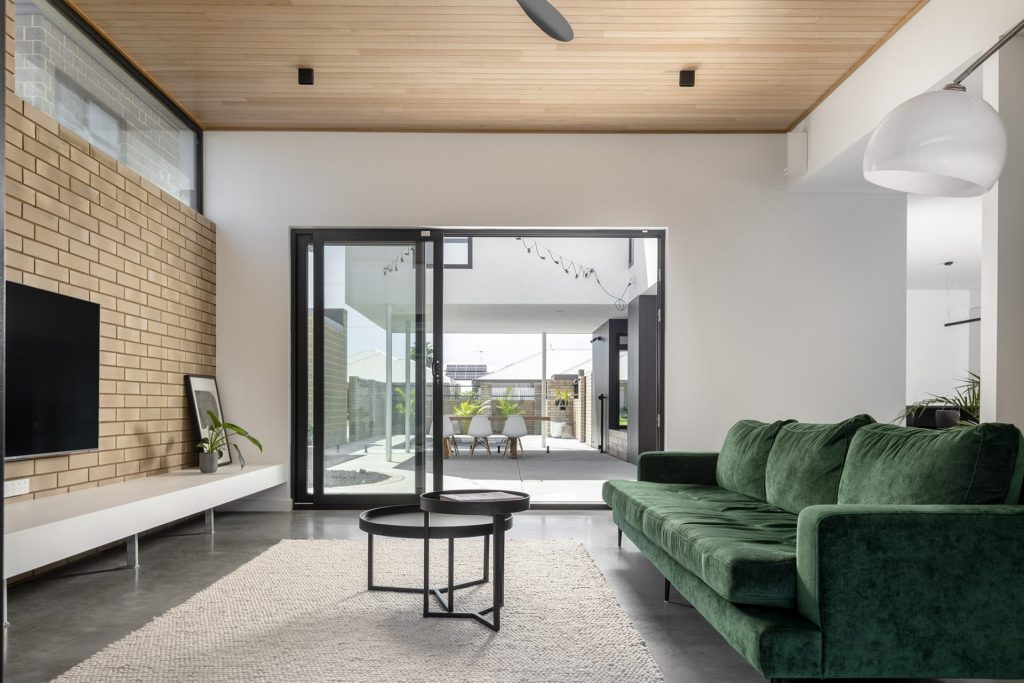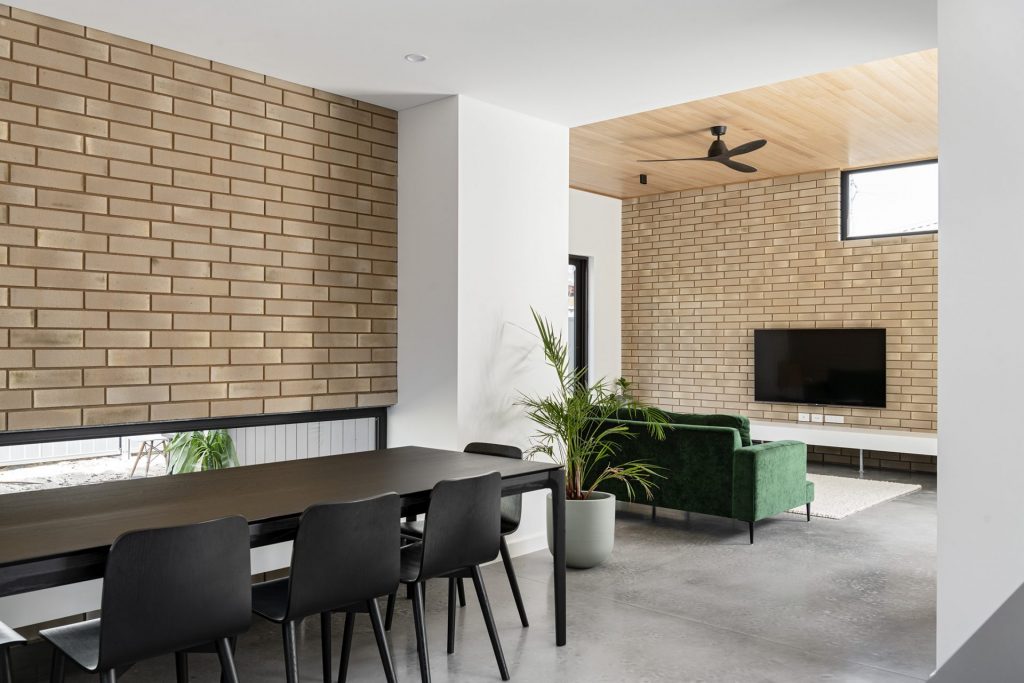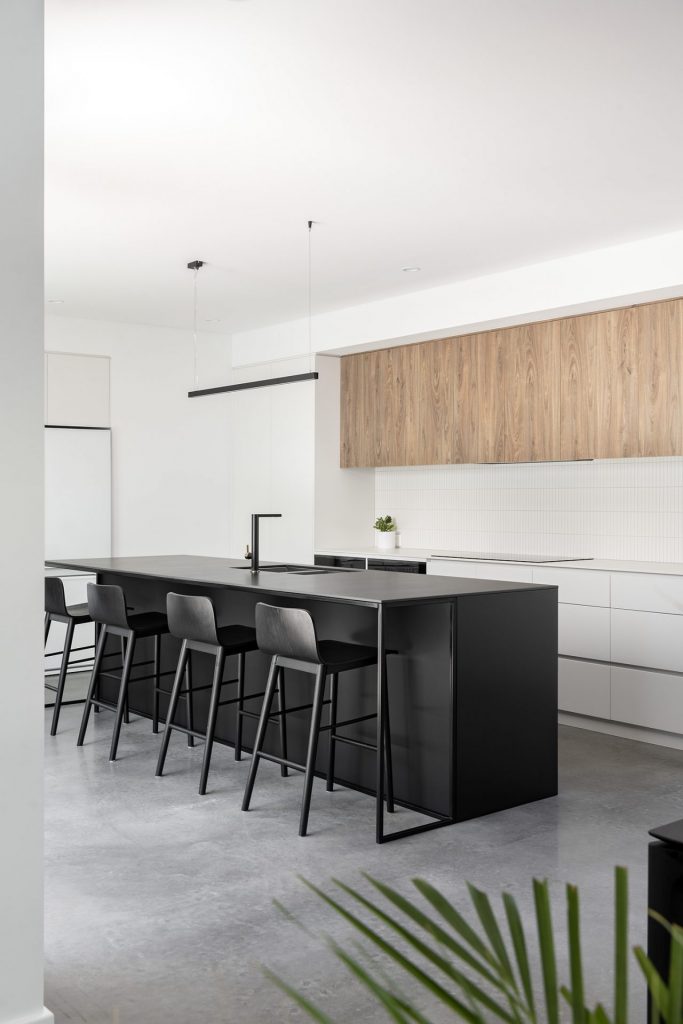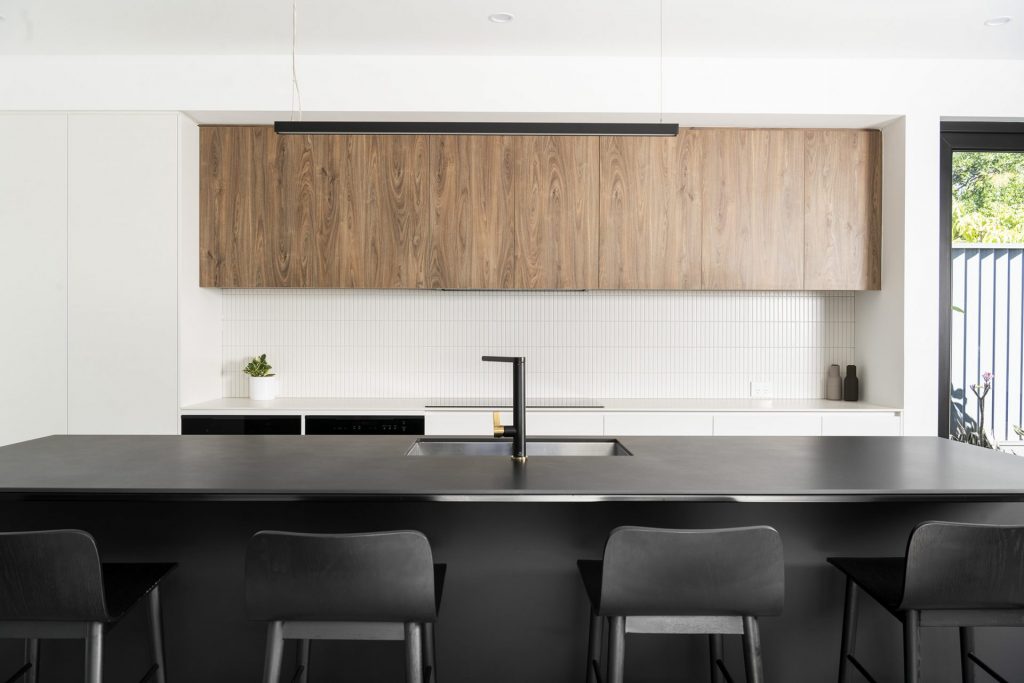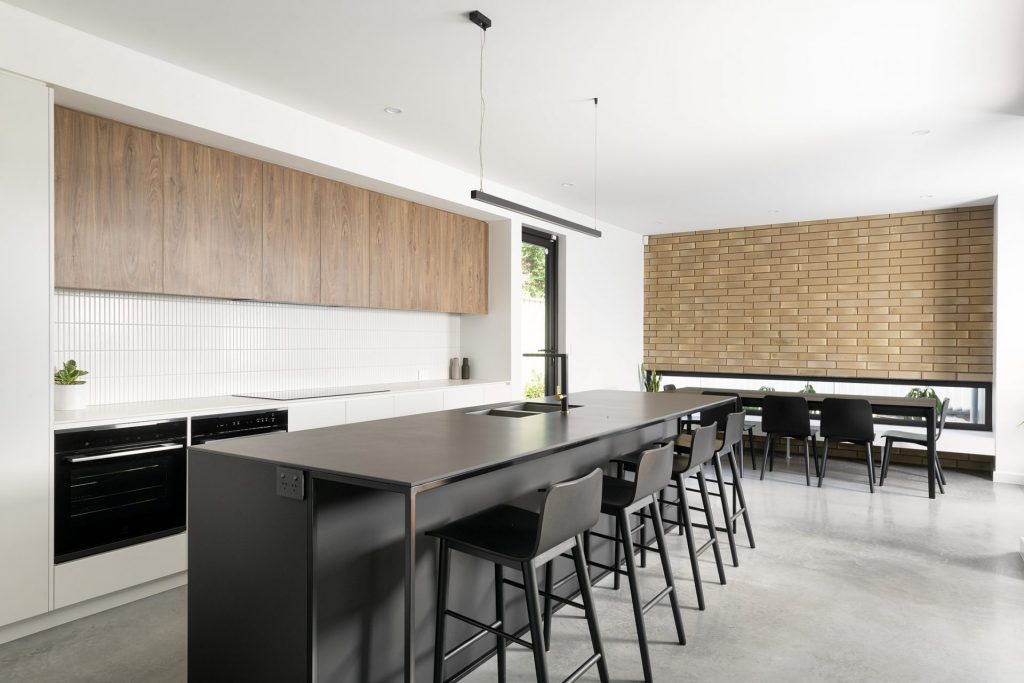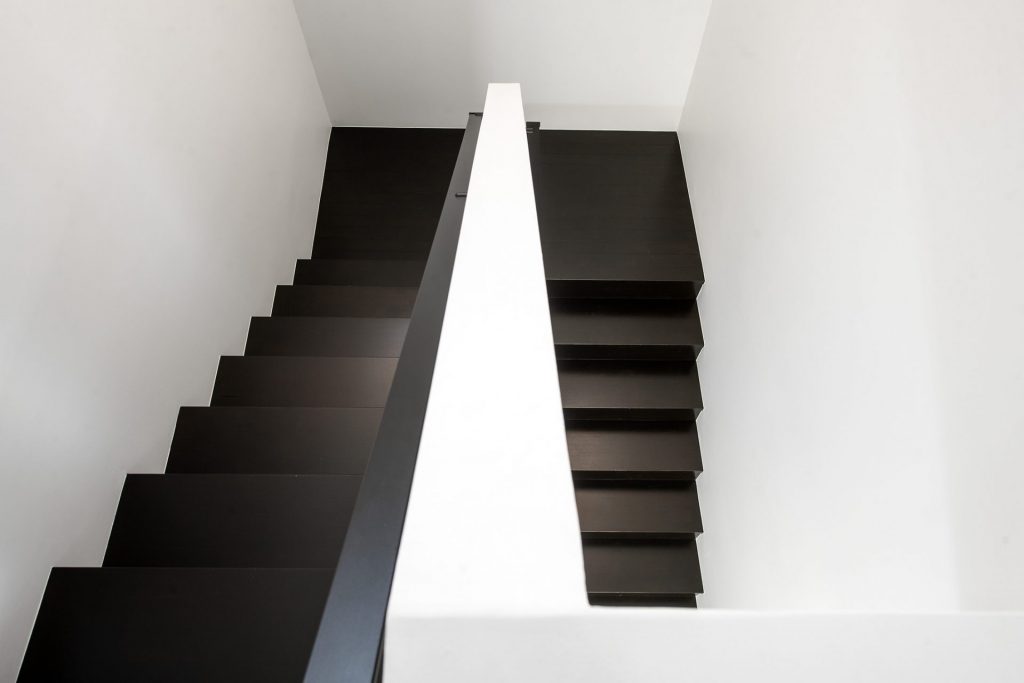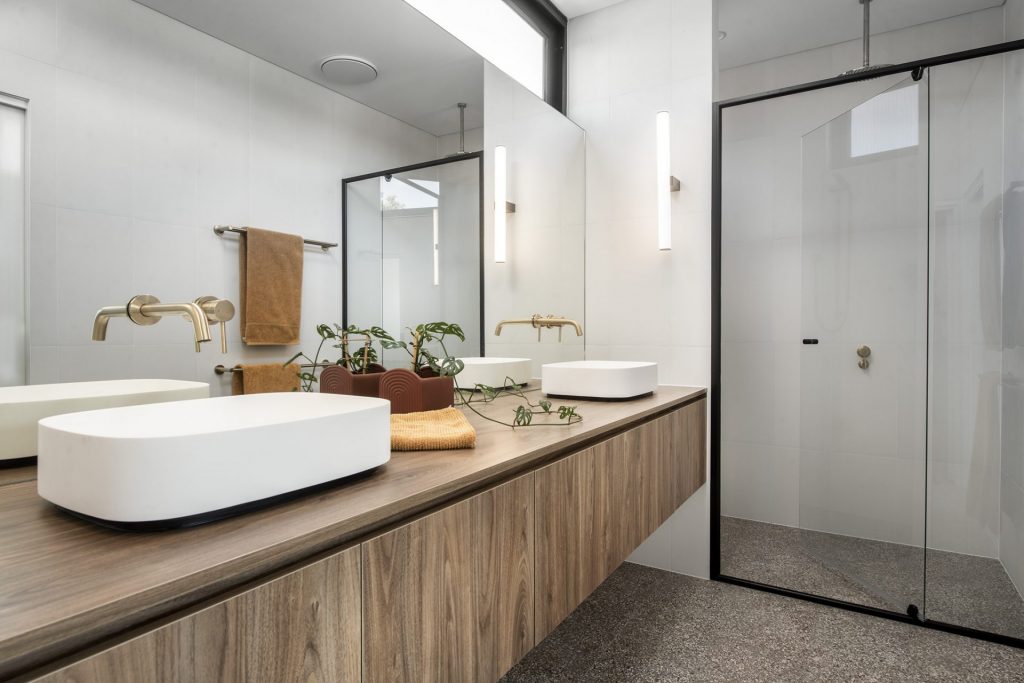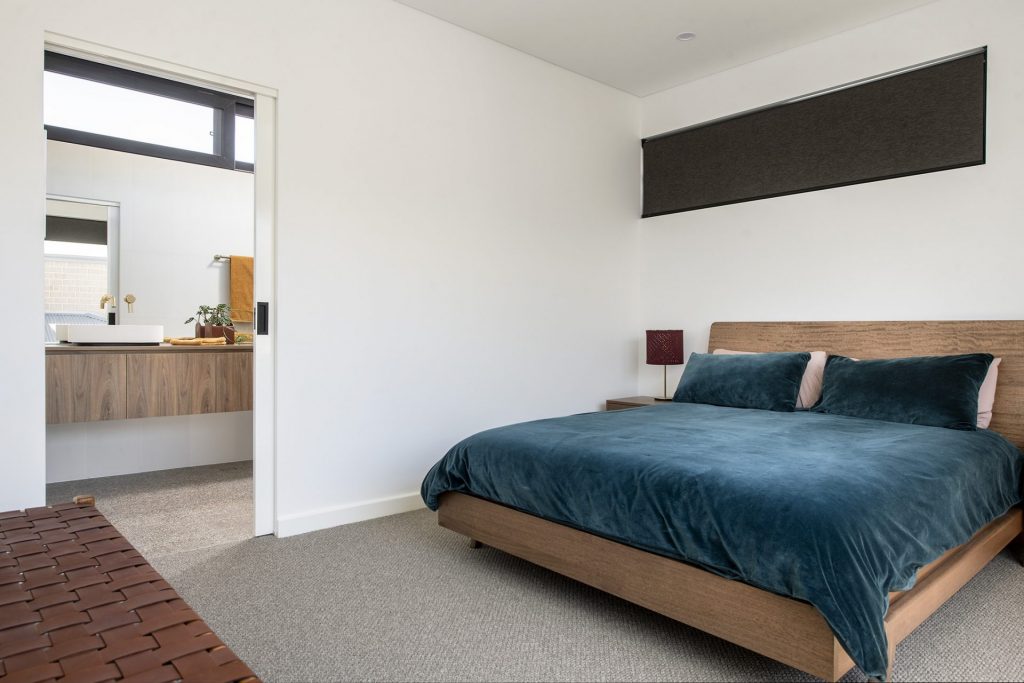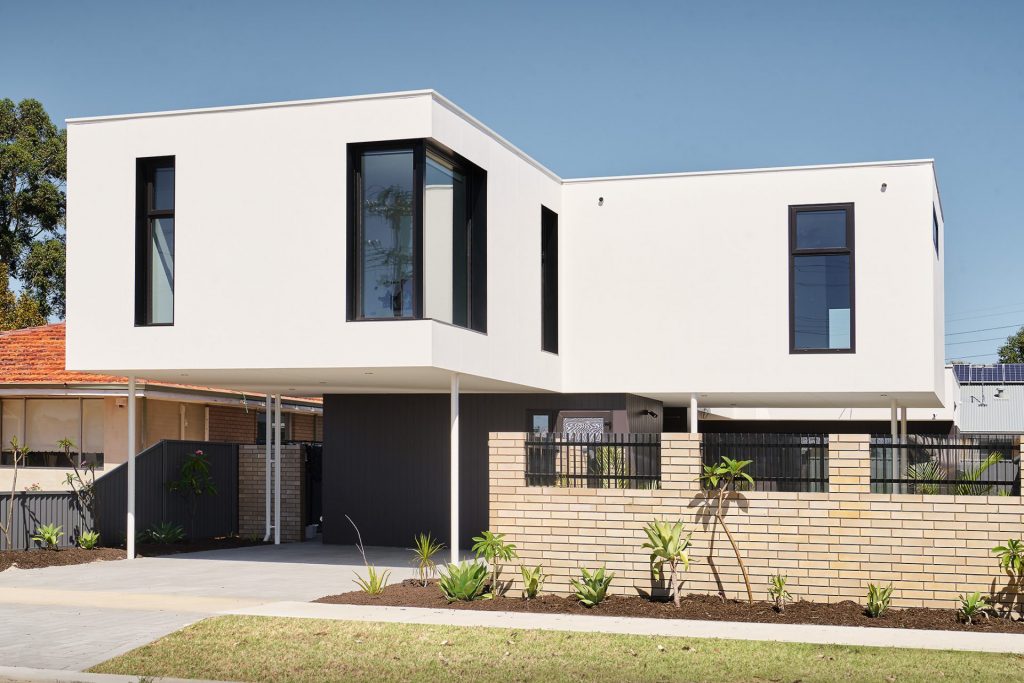Upfold Residence

Bringing the amenity of the 'Australian Dream' to a small block.

The Upfold Residence is a modest residence, built on big picture ideological foundations. The house endeavours to be an example of cost, energy and spatial efficiency on a traditional ‘narrow block’ site. The concept was to bridge the gap between the amenity and spatial experiences of the suburban ‘Australian Dream’ on a site less than half the traditional size(400sqm) – a size which is far more applicable to Perth’s energy efficient future.
The Client’s bought the ‘smaller’ block – the compromise required to afford their optimal location, but they were not excited by traditional implementations of ‘narrow block design.’ These cookie cutter examples did not consider the block from the ground up, but ‘squished’ traditional two storey designs into a lessened width. The resultant mass being suboptimal – garage dominated front yards, poor solar orientation, poor connection with the outdoors and significant loss of outdoor space and amenity potential, with interior windows and doors forced to face fences.
The Shelley House was design from the ground up to ensure the traditional amenity of larger blocks could be experienced on a smaller site. If one ignores traditional notions of front yard and backyard and instead combines them into a singular space along the long axis of the entire block, the perception and result of scale is immense. Initial client-architect conversations initiated a simple question – could you stand at the back fence and visually connect all the way to the front boundary, some 28 metres away?
To accomplish this, a ‘top heavy’ design was proposed, with the larger upper floor offset in key areas to create masses of covered space below. A single key concession is required for this design to work, to pull the mass of the house as close to the front boundary on the upper floor, and to minimise the garage face and building mass of traditional narrow block designs, a carport must be utilised in lieu of the traditional garage. Given the overwhelming positives of spatial quality, architectural aesthetic, orientation, internal zoning and external scale, the clients were more than happy with the proposition.
A second suspended first floor element protrudes over the combined outdoor ‘axis’ below, utilising the buildings own form for significant shade, alleviating the need for further built alfresco structures. A pool is positioned semi-offset from this form over, to create areas of shade and sun, and maximise the pool’s annual use.
Importantly, there is an area of the home in which the first floor does not cover the ground floor – the Living Room wing at the rear of the property. This allows the volume to be significantly increased in the Living Space, with increased ceiling heights and materiality, which helps distinguish the space spatially and connect it to the outdoor axis.
The design required the clients to be completely on board with the prioritisation of form, the simplicity of the aesthetic and the use of low embodied energy, efficient materials throughout, to create the unusual form, whilst sticking to their modest budget.
The resultant design is broadly a ‘C’ shape in plan, with the long axis facing north. This allows for major openings in key areas to orient North with elements of shading using the form of the building over, maximizing solar efficiency.
In the Living and Games Rooms, both parts of the short arms of the ‘C,’ openings are distinguished by views and light. Large high level north facing windows optimise winter sun whilst fulfilling privacy requirements, whilst select windows facing east and west connect the occupants to outside activity.
The building is constructed in lightweight timber, including the walls, roofs, and suspended floor, which benefit from significant insulation. This solution was low cost – a carpenter team could undertake the majority if the build in a single contract, quickly – and ensure that the predominant construction material had a proportionally low embodied energy. To counteract the significant insulation of lightweight construction, but limited thermal mass, the ground floor is exposed concrete, and there are select internal walls of feature brickwork, and select upper storey floor tiles, allowing winter sun to store and heat the residence.
Importantly and often missed in design, the significant weight reductions of the lightweight upper suspended floor and walls require a vastly reduced structure, and the corresponding benefit of reduced emissions. There are no concrete footings under external walls, only slab thickenings, and the concrete itself it used both as the structure and finish, eliminating any superfluous finish materials. The reduced thickness of walls adds the equivalent space of an extra bedroom, with no environmental or financial cost.
Two external CFC cladding profiles are used, painted light and dark, to create a horizontality to the design and maximise the aesthetic effect of the suspended elements. The openings are purposeful, their considered proportions are required in the context of the simplicity of the design aesthetic. Select windows on the street façade are installed in double stud walls to create the maximum external reveal, amplifying their proportions. European uPVC double glazed units utilised are significantly more efficient than the most efficient commercial aluminium systems. As uPVC does not corrode or weather, the lifetime of the product is extended, and the requirement of long-term replacement minimised.
The roof allows for a significant solar array, including the space and orientation for future expansion for electric car charging, whilst the flat form hides the Colorbond Surfmist colour, selected for its high reflectivity.
Internal spatial optimisation was crucial for both energy and cost savings. A central staircase ensured that the vast majority of the upper ‘wings’ of the home could be dedicated to habitable space, not hallways. This ensures that a family home of 230m2, only has a ground floor footprint of 105m2, touching the earth lightly. The priority of upper floor form ensures that the perception of mass at street level, via ground floor articulation, is reduced, and with the addition of native planting, creates a more sensitive communal interaction.
Long term occupancy was a brief priority to the Clients and formed part of the project’s sustainability credentials. If the residence did not adequately function in 10, 20 years and beyond, the requirement to build anew negates the benefits of the existing. To accomplish this, the scale andzoning of children’s bedrooms were of special interest – they must accommodate their needs at 10 years of age and as independent adults and were scaled accordingly. More importantly a sense of individuality and personal space important in development was considered and their bedrooms were situated in awing together, with no unaffiliated adjoining uses.
Thermal comfort is ensured, due to the building’s energy-focused construction specifications, and accompanying heating and cooling energy requirements are minimal. Importantly form and orientation contribute significantly to experienced indoor temperature – there is no central AC, only minor split systems, which are rarely used, and in winter, there is optimal harnessing of direct solar heat gains to the concrete floor.
Internal materials are durable, honest, and timeless, letting design trends be featured through furniture and art, minimising the potential of future building renovation.
Built in suspended plinths to the Dining and Living Rooms create versatile surfaces – massive expansions of seating potential for events, or as simple shelves for storage or display. Whilst in the Living Room, with feature timber ceilings, occupants can watch TV, whilst looking right or left, have full unobstructed views to the entire long-axis length of the property – a sensation of exterior connection and scale unexpected and rarely experienced in cost effective, narrow block housing.
Specifications

Type
New Residence
Location
Shelley, Western Australia
Completed
2021
Size m2
230m2 exc. Carport
Cost /m2
$2,700
Tender Savings
$134k
Energy Rating
6.2 Star
Builder
DA Burke
Structural Engineer
Cenit Group
Energy Consultants
CADDS Energy
Building Surveyor
Taycon Group
Photography
D-Max Photography
Awards

Design Matters
COMMENDATION WINNER – NEW HOUSE $500K-$750K
HIA Perth
FINALIST – INNOVATION IN LIGHTWEIGHT HOUSING $550k – $800k
Video Tour



